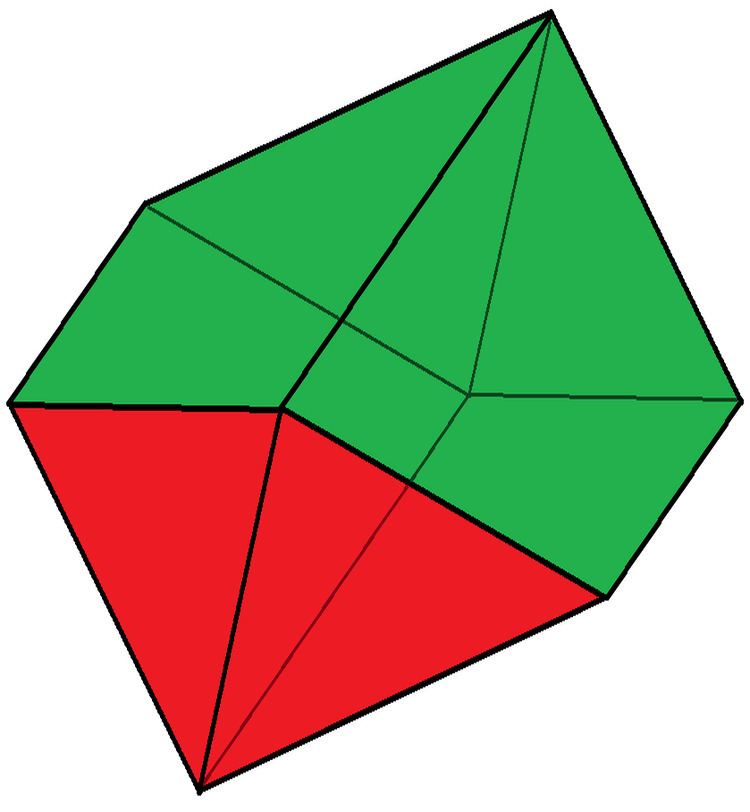 | ||
In geometry, an elongated octahedron (also trapezoidal octahedron) is a polyhedron with 8 faces (4 triangular, 4 isosceles trapezoidal), 14 edges, and 8 vertices.
Contents
As a deltahedral hexadecahedron
It can also be constructed as a hexadecahedron, with 16 triangular faces, 24 edges, and 10 vertices. Starting with the regular octahedron, it is elongated along one axes, adding 8 new triangles. It has 2 sets of 3 coplanar equilateral triangles (each forming a half-hexagon), and thus is not a Johnson solid.
If the sets of coplanar triangles are considered a single isosceles trapezoidal face (a triamond), it has 8 vertices, 14 edges, and 8 faces - 4 triangles and 4 triamonds . This construction has been called a triamond stretched octahedron.
As a folded hexahedron
Another interpretation can represent this solid as a hexahedron, by considering pairs of trapezoids as a folded regular hexagon. It will have 6 faces (4 triangles, and 2 hexagons), 12 edges, and 8 vertices.
Cartesian coordinates
The Cartesian coordinates of the 8 vertices of an elongated octahedron, elongated in the x-axis, with edge length 2 are:
( ±1, 0, ±2 ) ( ±2, ±1, 0 ).The 2 extra vertices of the deltahedral variation are:
( 0, ±1, 0 ).Related polyhedra and honeycombs
This polyhedron has a highest symmetry as D2h symmetry, order 8, representing 3 orthogonal mirrors. Removing one mirror between the pairs of triangles divides the polyhedron into two identical wedges, giving the names octahedral wedge, or double wedge. The half-model has 8 triangles and 2 squares.
In the special case, where the trapezoid faces are squares or rectangles, the pairs of triangles becoming coplanar and the polyhedron's geometry is more specifically a right rhombic prism.
It can also be seen as the augmentation of 2 octahedrons, sharing a common edge, with 2 tetrahedrons filling in the gaps. This represents a section of a tetrahedral-octahedral honeycomb. The elongated octahedron can thus be used with the tetrahedron as a space-filling honeycomb.
